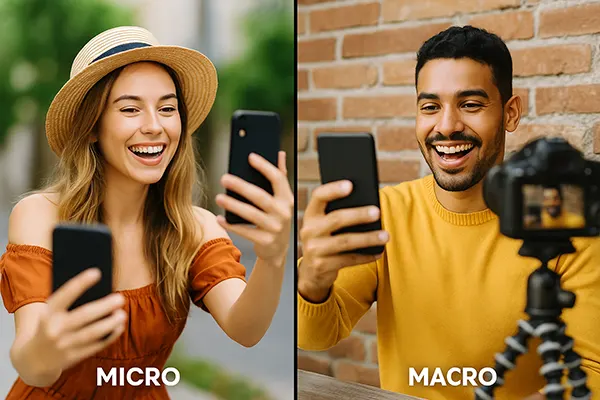
Micro vs Macro Influencers: Choosing the Right Partners for a Local Brand
Influencer marketing has transformed the way local businesses engage with their audiences. Choosing the right type of influencer—whether micro or macro—can determine how effectively a brand connects with its community and meets business goals. As of June 2025, market trends show a shift towards more personalised and authentic endorsements, making the influencer’s scale and relatability more crucial than ever.
The Core Differences Between Micro and Macro Influencers
Micro-influencers typically have between 1,000 and 100,000 followers and often operate within niche segments. Their audiences are more engaged, and they tend to have stronger personal connections with their followers. This makes them particularly valuable for local businesses looking to target specific demographics or regions.
On the other hand, macro-influencers boast larger followings—usually from 100,000 up to several million. While they offer higher reach and broader visibility, they may not provide the same depth of engagement. Macro collaborations tend to work best for national campaigns or when rapid brand awareness is the priority.
The choice between these two types isn’t just about numbers. It’s about aligning with the brand’s goals: targeted engagement or widespread visibility. Brands must evaluate their priorities carefully before investing in influencer partnerships.
Why Micro-Influencers Excel in Local Campaigns
Micro-influencers usually live in the same communities they promote, which fosters genuine relationships and trust among their audience. Their followers see them as peers rather than distant celebrities, leading to higher credibility in brand messaging.
For local brands, authenticity is a powerful tool. Micro-influencers can provide more organic integration into their content—whether it’s a café visit, store opening, or a shout-out for a local service. This level of realism increases the likelihood of audience engagement and conversions.
Moreover, campaigns with micro-influencers are generally more cost-effective. This allows smaller businesses to collaborate with multiple voices, amplifying their reach within the community without overspending on a single endorsement.
Understanding Metrics: Engagement, ROI, and Conversion Rates
As of mid-2025, engagement rates remain a critical metric in evaluating influencer effectiveness. Micro-influencers typically enjoy engagement rates between 5–8%, significantly higher than macro-influencers whose rates often fall below 2%.
This difference translates into better ROI for smaller campaigns, especially when conversions—not just visibility—are the main goal. A highly engaged niche audience is more likely to trust a recommendation and take action compared to a passive larger crowd.
Additionally, modern analytics tools now allow brands to assess influencer performance in real time, providing key data points such as click-through rates, conversion funnels, and location-based reach. These insights make it easier to evaluate the actual impact of a campaign rather than relying on follower counts alone.
Budget Allocation and Campaign Planning
Local brands often operate on limited budgets, which makes efficiency crucial. By choosing multiple micro-influencers across different neighbourhoods or interests, businesses can diversify risk and improve targeting precision.
Campaign planning should involve clear objectives: Is the brand looking to increase foot traffic, online orders, or social media followers? Setting these goals helps determine which influencer type is most suitable.
Collaboration strategies also matter. For instance, exclusive discount codes or giveaways can drive engagement. Micro-influencers are often more flexible in participating in creative, tailored content efforts that resonate with local audiences.

Brand Alignment, Values, and Audience Overlap
Successful influencer marketing depends not only on reach but also on alignment. An influencer must share the values of the brand and speak to an audience that matches the brand’s target demographic.
Audience overlap analysis is easier now thanks to tools such as Instagram Insights, TikTok Creator Marketplace, and third-party analytics dashboards. Local brands should use these to assess shared interests, regional influence, and sentiment analysis.
Micro-influencers often reflect their community’s culture more closely, which strengthens emotional connections. Macro-influencers, while offering glamour and scale, may lack this nuance and fail to communicate the brand’s mission effectively to local consumers.
Trustworthiness and Long-Term Partnerships
One-off sponsored posts rarely build trust. Instead, repeated collaborations signal a genuine relationship between brand and influencer, fostering loyalty among followers. Micro-influencers are more open to building long-term partnerships due to shared growth goals.
Authenticity has become even more vital in 2025, especially with increasing scrutiny on paid endorsements and regulatory guidelines across the EU. Transparent disclosures and real interactions are essential.
Ultimately, brands should prioritise influencers who show consistent behaviour, clear communication, and positive audience feedback. These indicators matter more than flashy numbers or viral fame when it comes to sustained marketing success.
